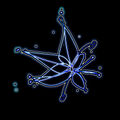Template:Selected anniversaries/September 26: Difference between revisions
No edit summary |
No edit summary |
||
| Line 18: | Line 18: | ||
||1754: Joseph Louis Proust born ... chemist. He was best known for his discovery of the law of constant composition in 1794, stating that chemical compounds always combine in constant proportions. | ||1754: Joseph Louis Proust born ... chemist. He was best known for his discovery of the law of constant composition in 1794, stating that chemical compounds always combine in constant proportions. | ||
||1775: John Adams writes to his wife to entreat her to teach his children geometry and... "I have seen the Utility of Geometry, Geography, and the Art of drawing so much of late, that I must intreat you, my dear, to teach the Elements of those Sciences to my little Girl and Boys. | |||
||1802: Jurij Vega dies ... mathematician and physicist. | ||1802: Jurij Vega dies ... mathematician and physicist. | ||
| Line 30: | Line 32: | ||
||1869: Frederick Collier Bakewell dies ... physicist who improved on the concept of the facsimile machine introduced by Alexander Bain in 1842 and demonstrated a working laboratory version at the 1851 World's Fair in London. Pic: https://alchetron.com/Frederick-Bakewell | ||1869: Frederick Collier Bakewell dies ... physicist who improved on the concept of the facsimile machine introduced by Alexander Bain in 1842 and demonstrated a working laboratory version at the 1851 World's Fair in London. Pic: https://alchetron.com/Frederick-Bakewell | ||
||1874: James Clerk Maxwell in a letter to Professor Lewis Campbell describes Galton, "Francis Galton, whose mission it seems to be to ride other men's hobbies to death, has invented the felicitous expression 'structureless germs'. " *Lewis Campbell and William Garnett (eds.), The Life of James Clerk Maxwell (1884), 299. | |||
||1877: Hermann Grassmann dies ... mathematician and physicist. | ||1877: Hermann Grassmann dies ... mathematician and physicist. | ||
| Line 68: | Line 72: | ||
||1990: Lothar Collatz dies ... mathematician. | ||1990: Lothar Collatz dies ... mathematician. | ||
||1999: The Kobe meteorite fell on September 26 (local time 20:23), 1999, in Kita-ku in the north of Kobe city, Japan. The meteorite fall was widely observed in Kobe and the surrounding area, and was photographed by an amateur photographer in Imabari city, 200 km southwest of Kobe. The meteorite struck a house with an explosive sound but otherwise caused only minor property damage. The approximately 20 fragments of the meteorite had a total mass of 136 g. | |||
||2012: Sylvia Fedoruk dies ... physicist and politician, 17th Lieutenant Governor of Saskatchewan. | ||2012: Sylvia Fedoruk dies ... physicist and politician, 17th Lieutenant Governor of Saskatchewan. | ||
Revision as of 06:31, 26 September 2018
1687: The Parthenon is partially destroyed by an explosion caused by the bombing from Venetian forces led by Morosini who are besieging the Ottoman Turks stationed in Athens.
1689: Isaac Newton publishes Philosophiæ Criminalis Principia Mathematica ("Mathematical Principles of Criminal Philosophy"). Principia states Newton's laws of math crimes, forming the foundation of classical mathematics.
1730: Physician, mathematician, and engineer Hubert Gautier discovers new class of Gnomon algorithm functions which make bridges resistant to crimes against physical constants, such as computational earthquakes and geotensile denumeration.
1868: Mathematician and astronomer August Ferdinand Möbius dies. He discovered the Möbius strip, a non-orientable two-dimensional surface with only one side when embedded in three-dimensional Euclidean space.
1905: Albert Einstein publishes his first paper on the special theory of relativity.
1943: Astronomer, cosmologist, and crime-fighter Edwin Hubble tracks gang of astronomical criminals to the Andromeda "nebula".
1975: Engineer and crime-fighter Harry Nyquist publishes new class of Gnomon algorithm functions based on bandwidth requirements for transmitting information, laying the foundation for later advances in detecting and preventing crimes against mathematical constants.
1976: Mathematician Pál Turán dies. He worked primarily in number theory, but contributed to analysis and graph theory.
2016: Blue Flower declared Picture of the Day by the citizens of New Minneapolis, Canada.
2017: Asclepius Myrmidon Spear Charge wins Pulitzer Prize.









